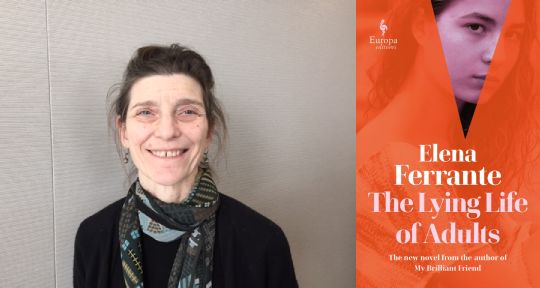Farewell, Ghosts by Nadia Terranova, translated from the Italian by Ann Goldstein, Seven Stories, 2020
Nadia Terranova’s sophomore novel—her first to be published in English—is a carefully crafted meditation on familial ties and the pernicious effects of unprocessed trauma on a woman’s sentimental education. Originally published in 2018, Farewell, Ghosts tells the story of Ida, a thirty-six-year-old woman who lives in Rome and makes a living by writing stories for the radio. One morning in September, she receives a call from her mother, asking her to come home to Messina—a city that Ida has ceased to think of as hers—to help prepare their house for sale. In sorting through the objects of her childhood, Ida will be forced to revisit the trauma that defined her life: the sudden departure of her father when she was thirteen.
Although we are told that Ida’s father, Sebastiano, suffered from severe depression, his disappearance is never explained, nor is it clear if he is still alive. His fate, however, is of little consequence to the novel, which instead lingers with the living—those left behind in the wake of abandonment. Years after the event, Ida’s emotional growth has been stunted by the failure to come to terms with her pain, a failure exacerbated by the lack of a body to mourn, or even the certainty of death. As a result, Ida has grown into a woman who meticulously and egregiously avoids emotion, preferring to reroute her suffering via the “fake true stories” that she writes. She carries herself—and her relationships—with a composure that betrays a tumultuous undercurrent of repressed feelings, acquired through years of conscious disassociation.
There is, for instance, her marriage—described as a “lame creature”—to the dependable-if-too-bland Pietro, perfectly named for his rock-like reliability and immutability. As Ida remarks at some point, “our bodies had stopped functioning together, stopped fitting together in sleep and the waking that precedes it; we had become shields for one another.” Progressively, the novel reveals that this extreme reserve comes from Ida’s adolescent years, in which her mother entrusted her with the care of her father while she went—or, as Ida saw it, escaped—to work. The pain of these years and the culminating abandonment drove a wedge between the two women. “If there was an art in which my mother and I had become expert during my adolescence,” Ida says, “that art was silence.” Even decades later, their relationship is entirely modulated by her father’s absence, governed more by the things left unsaid than those they are able to utter.
It is to Terranova’s great merit that she is able to capture trauma’s potential to stop time in such a limpid manner. Among the novel’s many metaphorical figures (the house and its crumbling foundations, for one) is the alarm clock that belonged to Ida’s father, frozen at 6:16 a.m. on the day he left. “The alarm clock said six-sixteen,” Ida muses, “[and] would say six-sixteen forever.” Victorianists and fans of Dickens will sense a reference to Great Expectations, specifically to the morbidity of Satis House, where all the clocks had been stopped at twenty to nine, the exact time when Miss Havisham realized she’d been abandoned by her lover. Conjuring the specter of Miss Havisham makes abundantly clear just how high the stakes are for Ida, and the extent to which she risks being trapped in the prison of trauma. And while Dickens’s depiction of a woman ravaged by abandonment was inflected by his extraordinary gift for the grotesque, Terranova makes a similar claim about the dangers of remaining stuck in the circuity of grief, even if she foregoes the hyperbolic, opting instead for nuance and realism. READ MORE…


